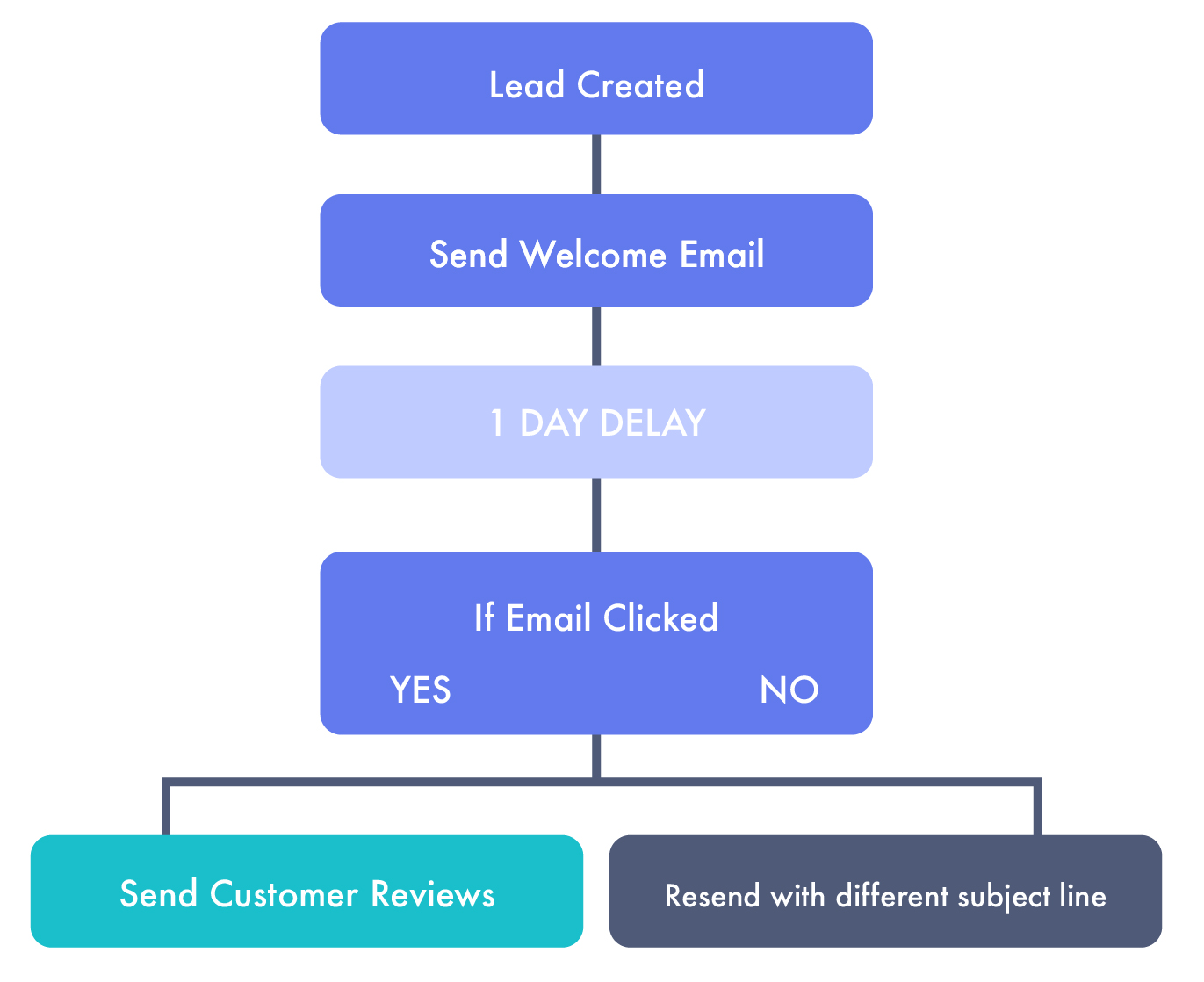Long sales cycles are common in B2B companies. This is why drip marketing campaigns are so important for lead creation. The longer the sales cycle, the more likely it is that the prospect may change their mind or choose a competitor’s product.
Designing, evaluating, and implementing an effective marketing plan often takes time, energy, and resources. Imagine having to do that for an “automated” real-time campaign based on triggers, deadlines, and action that isn’t handled by you. Imagine implementing it for a B2B corporation to make things much more complicated.
However, it’s not as complicated as it sounds given you know how to set up your drip campaign in a systematic way. This comprehensive guide to drip marketing will help you get started with your first campaign or fine-tune your existing one.
So, what is drip marketing in B2B?
What is Drip Marketing?
Drip marketing is a series of automatic emails sent out in response to particular schedules or user activities. They allow you to communicate with groups of people based on events such as when a user creates an account or how frequently that user clicks on emails.
Drip marketing entails sending a continual stream of pre-written communications to potential consumers or purchasers through several platforms such as email, direct mail, and social media.
Here’s a small example of drip marketing.
What Makes Drip Marketing Effective for B2B Companies?
The open rate on drip emails is about 80% more than single sends (a.k.a. Bulk Emailing) with an average click-through rate 3x higher. A little time and effort put in at the beginning will go a long way toward achieving the best results.
Here are five primary reasons why drip marketing is effective for B2B companies:
Highly Relevant, Personalized Messaging
Drip marketing isn’t spray and pray. It’s a targeted approach. It doesn’t fill your lead’s inbox with generic messaging, but it is triggered based on your lead’s activity and takes into account their interests.
Unlike the push marketing approach, drip marketing slowly nurtures your potential buyer’s interest based on your prior behavior with the product or the content. Your leads are well aware that the emails are automated. However, because they are personalized depending on the recipient’s interests and actions, they are extremely effective. They are good at capturing the recipient’s attention, opening the email, and have higher chances of ending up buying.
Messages are Pre-Written Based on the Workflow
The emails are not randomly sent, but they follow a strategically designed, pre-written workflow. You aren’t sending out a new email every time a new prospect expresses interest in your product. They simply join your existing workflow.
Drip marketing is automatically triggered. Any action (downloading a book, finishing a transaction, signing up for a free trial, subscribing to a blog, etc.) or inaction can be the trigger (not completing the purchase, not clicking an email, not using the app for a month, etc.).
Boosted Engagement & Loyalty
Drip email marketing allows you to better and more efficiently engage with prospects and clients. Emails sent in response to user actions are more likely to receive a response since they are highly relevant.
For instance, someone signups for a free trial. You can utilize a drip-email campaign to send a series of emails showing them how to get the most out of their free trial and the product. You can then slowly start pitching them more benefits they can unlock in the paid version.
You can also keep the existing customers engaged by sharing the content based on their interests, general feedback, etc. This gives you a chance to cross-sell or upsell. If they are your newly onboarded client, you can use drip marketing to help them explore more about the product, what your other customers are saying about the product, etc. This will make them feel confident about their decision to use your product.
Automated Lead Nurturing
Potential clients may not be ready to buy from you immediately. But, they can consider you in the future. Before making a decision, these leads may want to learn more about your company and your product or service.
You may highlight the benefits of your product or service, answer potential concerns, and address any objections a prospect may have by nurturing them with a drip-email campaign. It’s similar to conducting a sales conversation over several emails.
Increased Brand Awareness
A succession of highly relevant emails keeps your brand at the forefront of your customers’ minds. When a customer is ready for what you have to offer, you will be the first company that comes to mind. They’ll also be more inclined to recommend your company to others looking for what you have to offer.
Drip marketing enables your company to begin nurturing the relationships critical to its success. Drip marketing is all about giving people the right information at the right time.
How to Set Up a Drip Marketing Campaign
Now that you know the effectiveness of implementing drip marketing, let’s look at how you actually map out a successful automated drip campaign.
Identify Your Potential Audience
Drip campaigns are all about segmenting your subscriber list and targeting information to certain client groups. The most crucial part of this process is deciding which triggers and groups you’ll use in your drip marketing approach.
Drips are usually triggered by one of two things: the user takes an action in your app or on your website or exhibits a key behavior.
Example Of Action Trigger: When a user downloads your app’s trial version, you send them a series of six instructive emails throughout the trial period, with useful recommendations on how to get the most out of it.
Example of Behaviour: A user is using a free version of your product but suddenly stops using it for several days. You send them an automated email asking if they need any help.
To segment based on their stage in the buyer’s journey, you can use buyer intent data. Intent data helps you to separate the ready-to-buy prospects/ leads from the ones that need more nurturing. Based on this data, you can set the correct workflow.
—
Are you curious about identifying your hot leads using intent data?
—
Compose a Message
Now that you know who you’re going after, you need to come up with a message both beneficial and attention-getting. What are you looking for the user to do? Or, what do you want the user to take away from the experience? Keep your messaging clear, actionable, and appealing based on your answer. Maintain the tone you have established for your company.
Prepare a Plan
Next and the core of drip campaign – planning. You must determine the workflow of your drip campaign, including the procedure from initial contact to sale and support. This is also the time to define your campaign’s objectives, ensure that the copy in each email is consistent with the others, and establish how you will track your progress.
Consider the following questions as a starting point:
- How many emails will I send, when will they be sent, and in what order will they be sent?
- Is my message in sync with my triggers?
- How will I know if I have succeeded?
—
Hopefully, by this stage, you have figured out why you’re creating a sophisticated drip campaign—perhaps for customer acquisition, engagement, or product release and update education. Whatever the situation may be, you must define campaign goals and determine the criteria by which you will measure your success.
Drip marketing is not limited to your existing clients or subscribers. You can create an email list of potential buyers that are not in your CRM. Once you have a valid list of emails, you can plan a drip campaign to nurture new prospects, encourage them to engage with your product, and convert them into paying customers.
Building Targeted Email List for Drip Campaign
SalesIntel allows you to create highly targeted email lists for drip campaigns and ensure your efforts generate positive results.
SalesIntel is possibly the simplest strategy to grow your prospect list. This method reduces the process of locating firms, contacts, and confirmed contact information to a single step.
You may create a look-alike audience by running your best consumers through these prospect-finding tools. In other words, by describing your ideal clients’ traits, you can get a list of prospects who have those criteria.
For example, if you want to acquire contact information (email addresses and phone numbers) from CEOs of organizations with 25 to 100 employees, are in the healthcare field, and are located in the United States.
Simply filter these businesses and contact attributes with your lead search tool and hit the ‘Search’ button.
If you are excited to start creating your email list, you can start now.
Keep It Nice and Simple
Like any good thing, you don’t want to overdo it. Customers will become irritated if you send too many drip emails. A thoughtful set of drip emails, on the other hand, can be an excellent way to encourage people to buy your product, teach them how to use it after they buy, and get new subscribers up to speed on your email newsletter.
You can ensure that your contacts receive the exact content they require to make a purchasing choice by continually providing value to them. This will enable your sales team to sell with ease, resulting in a significant revenue increase for your business.







